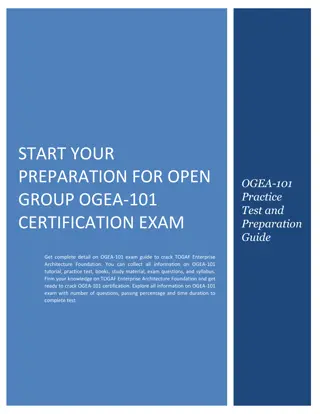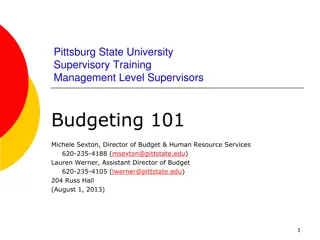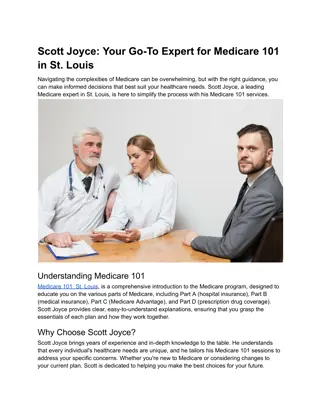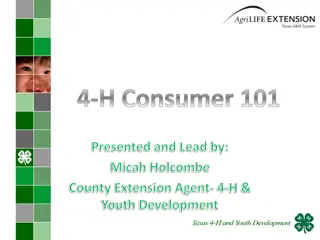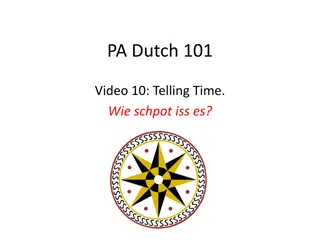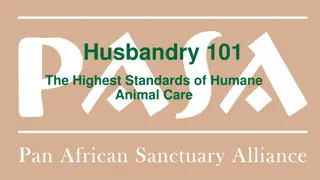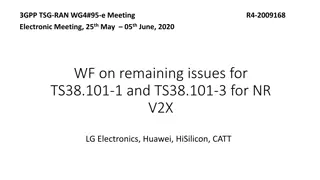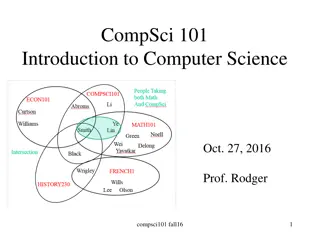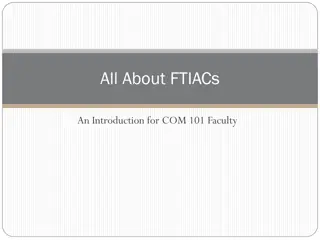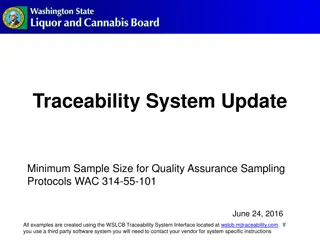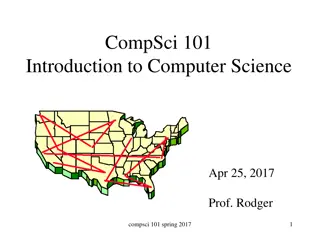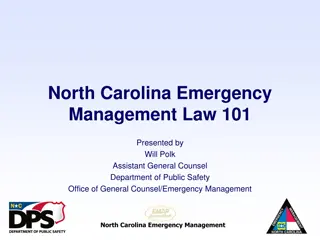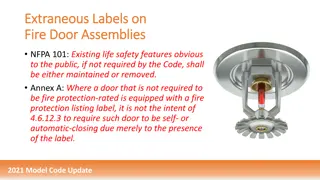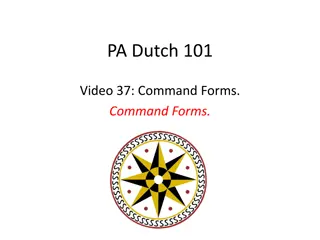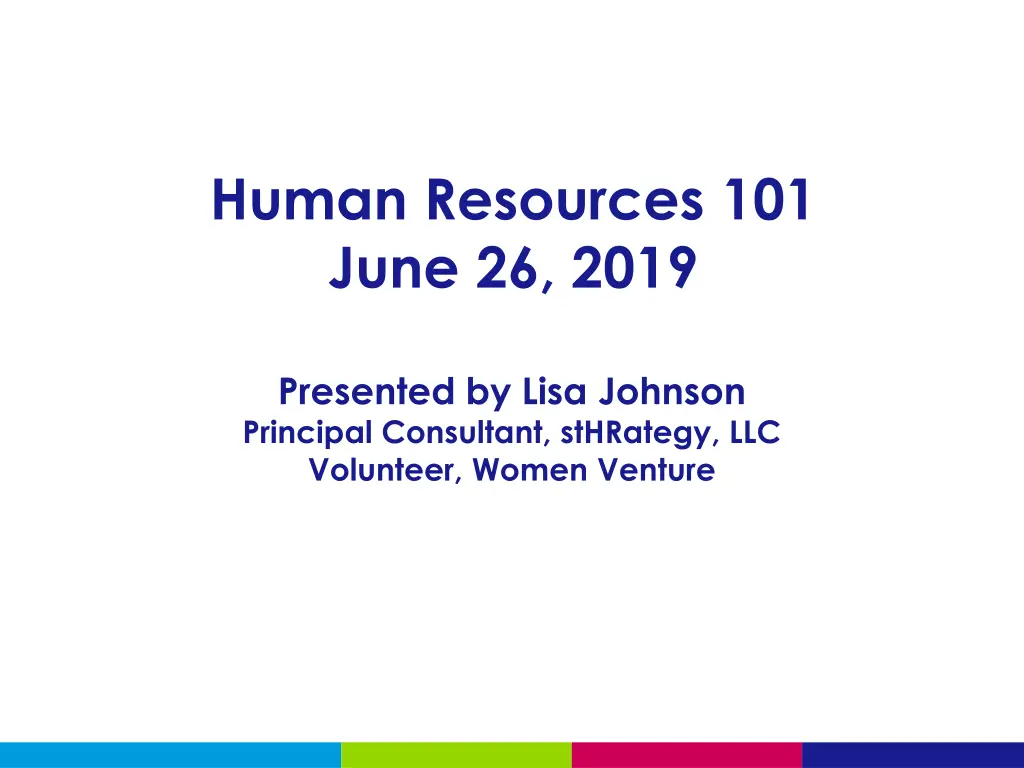
Understanding Human Resources Legal Requirements and Employment Guidelines
Enhance your knowledge of key legal requirements and employment guidelines in human resources with a focus on Equal Employment Opportunity, ADA, FLSA, and more. Learn about hiring processes, employment classifications, recordkeeping, taxes, and benefits.
Uploaded on | 2 Views
Download Presentation

Please find below an Image/Link to download the presentation.
The content on the website is provided AS IS for your information and personal use only. It may not be sold, licensed, or shared on other websites without obtaining consent from the author. If you encounter any issues during the download, it is possible that the publisher has removed the file from their server.
You are allowed to download the files provided on this website for personal or commercial use, subject to the condition that they are used lawfully. All files are the property of their respective owners.
The content on the website is provided AS IS for your information and personal use only. It may not be sold, licensed, or shared on other websites without obtaining consent from the author.
E N D
Presentation Transcript
Human Resources 101 June 26, 2019 Presented by Lisa Johnson Principal Consultant, stHRategy, LLC Volunteer, Women Venture
Session Overview & Purpose Provide an overview of: Key Legal Requirements Employment Classifications Employment Recordkeeping Requirements Employment Tax & Insurance Requirements Employment Benefits Overview of the Hiring Process
Key Legal Requirements Equal Employment Opportunity (EEO) Uniform Guidelines on Employee Selection (UGESP) Americans with Disabilities Act (ADA) Fair Labor Standards Act (FLSA) Non-Employee Considerations Employment record keeping requirements Pre-employment checks, tests or screens Employment Taxes & Insurance Workplace Posters
Equal Employment Opportunity To provide equal employment opportunities (EEO) to all employees and applicants for employment without regard to race, color, religion, gender, sexual orientation, gender identity, national origin, age, disability, genetic information, marital status, amnesty or status as a covered veteran in accordance with applicable federal, state and local laws. Applies to all terms and conditions of employment, including hiring, placement, promotion, termination, layoff, recall, transfer, leaves of absence, compensation and training.
Uniform Guidelines on Employee Selection Procedures Apply to federal employers and private and public employers subject to Title VII (i.e., those with 15 or more employees). Guidelines not law. Help avoid adverse or show that any resulting adverse impact is based on a validated selection method. Applicant tracking records are to be kept only on sex, race and national origin. This can be done by visual observation, personal knowledge or self-identification. This information should not be used in making a hiring decision, only to comply with federal recordkeeping guidelines. This information should be kept separately from the application and personnel folder.
Americans with Disabilities Act Prohibits unjustified discrimination based on disability Includes job application procedures, hiring, firing, advancement, compensation, training, and other terms, conditions, and privileges of employment. Applies to recruitment, advertising, tenure, layoff, leave, fringe benefits, and all other employment-related activities. Requires employers with 15+ employees to provide reasonable accommodations to employees with disabilities, and imposes accessibility requirements on public accommodations. For more information see https://www.ada.gov/employmt.htm
Fair Labor Standards Act Applies to: Employees engaged in interstate commerce or employed by an enterprise engaged in commerce or in the production of goods for commerce unless the employer can claim an exemption from coverage "any individual employed by an employer" but not to independent contractors or volunteers because they are not considered "employees" under the FLSA. Establishes: National minimum wage (2019 Rates of $7.25/hr federal; $9.86/hr in Minnesota) To view current rates Click Here. Overtime pay rules Meal and rest periods Child labor laws
Fair Labor Standards Act Exempt - from overtime Non-Exempt - from overtime Regular Employed indefinitely May be eligible for certain benefits Temporary Employed for a defined period of time Generally not eligible for benefits Contractor Self employed, paid via invoice/Accounts payable using W-9s and 1099s
Non-Employee Considerations Worker Type Independent Contractors FLSA? Comments N penalties for compensation and benefits Duration of assignment Degree of control over work processes Exclusivity of relationship Business essentials Must meet the legal definition to avoid back-pay and Temps Y* If employed by an agency the agency is responsible for FLSA compliance If employed directly, then follow the same legal requirements as for regular employees Volunteers N Individuals who volunteer or donate their services are not considered employees It must be clear up front what the arrangement (classification) is and that services are being provided without contemplation of pay All worker types should be treated in accordance with EEO requirements
Employment Recordkeeping Requirement Applicant Tracking Summary Records related to sex, race and national origin of applicants for employment Kept separately from the application and personnel folder. Must report newly hired /rehired employees to the Centralized Employee Registry (CER) to help state's child support agencies Reporting New Hires and Rehired Employees Personnel Records Under Minnesota law, personnel records must be retained and shared with employees as required. Sensitive information should be kept separate from the official personnel file Wage Records Employers are required to provide each employee with a written statement of earnings New employee notice requirement regarding wage theft (eff. 7/1/2019)
Pre-Employment Screens If you are considering conducting any pre-employment screens that will be considered as part of your hiring decision please obtain advice to ensure you comply with established requirements As examples: Background checks (e.g.; Criminal, Driving, Credit) Drug-tests Assessments (e.g.; Competency) Screens (e.g.; Personality) Medical Examinations
Employment Taxes & Insurance Withholding Taxes Obtain W-4 on or before employment (federal withholding) https://irs.gov > Forms & Instructions Pay federal withholding tax https://www.eftps.gov/eftps/ Pay state withholding tax - http://www.revenue.state.mn.us/Pages/default.aspx Report wages & taxes by end of January for the prior year (W-2 for employees, 1099 for contractors) Workers Compensation Insurance contact your business insurance carrier Unemployment Insurance - http://www.uimn.org/uimn/
Employment Benefits Minnesota has various Leave Laws (parental, safe/sick, voting, bone marrow donation, jury duty, military, school conferences/activities, etc.) for more information see https://www.xperthr.com/search/?keywords=minnesota+st ate+laws Discretionary Benefits Health Insurance Dental Insurance Retirement Plans Life Insurance etc.
The Hiring Process Planning Sourcing Selecting On-boarding Planning to Staff Complying with Legal Requirements Writing a Job Description Compensating Fairly Recordkeeping Posting/Sourcing Applicant Tracking Screening Interviewing Conducting Assessments Checking References Deciding who to Hire Communicating Your Decision Performing pre- employment checks / screens Preparing for the First Day Completing New Hire Paperwork Maintaining Personnel Files
Hiring - Planning Component Planning to Staff Purpose Key Elements Clarify accountabilities Organization Chart Job Descriptions (see below) Previously covered Complying with Legal Requirements Writing a Job Description Avoid penalties and charges of discrimination Establish clear hiring & performance criteria Title Position Responsibilities Essential Functions Additional Job related education, experience, skills and abilities FLSA previously covered Identify market rates for like positions - http://www.salary.com/ Previously covered* Compensating Fairly Comply with FLSA Attract/retain staff Recordkeeping Avoid penalties for incomplete or inaccurate documentation
Hiring - Sourcing Component Posting/Sourcing Purpose Key Elements Create awareness Compel candidate response Job Posting / Advertisements Referrals Social Media Youth Employment Programs* Outplacement programs Applicant Tracking Collect information to support fair hiring decisions Identify sourcing best practices Use an Employment Application* UGESP - records are to be kept only on sex, race and national origin (kept separate from personnel file). Sourcing BPs Buyer s choice on what to track Variety of tools can be used (many systems sold HRIS and standalone) *Youth Employment Programs: Achieve Minneapolis (Step-Up), Right Track (St. Paul)
Hiring - Selecting Component Screening Purpose Key Elements Organization Chart Job Descriptions (see below) Prioritize applicants Interviewing Prioritize candidates Understand Acceptable vs. Unacceptable questions Use consistent, job related and behavioral interview questions Include more than one interviewer Conducting Assessments Evaluate pros vs. cons Obtain advice to ensure you comply with established requirements Complement internal assessment Checking References Check 2-3 professional references Use consistent questions across references and final candidates* Validate/Complement internal assessment Deciding who to Hire Weigh all information obtained Protect against adverse impact (claims of discrimination) Select the most qualified candidate Communicating Your Decision Performing pre- employment checks / screens Send selected candidate an offer letter Inform candidates who were not selected Maintain a positive brand Manage risk All checks and screens must be job related Criminal background checks recommended Obtain advice to ensure you comply with established requirements
Hiring On-boarding Component Preparing for the First Day Purpose Key Elements Set new hire up for success See New Employee Orientation Checklist Post-Offer Pre-Start Start Date Completing New Hire Paperwork Comply with recordkeeping and tax requirements I-9 Federal W-4 State W-4 (if required) New Hire Reporting Form Benefit Enrollment Forms Licensures/Certifications (if applicable) Maintaining Personnel Files Avoid penalties, back pay, etc. Recordkeeping previously covered*
Useful Resources Minnesota Department of Labor - http://www.dli.mn.gov United States Department of Labor - https://www.dli.mn.gov/business Bureah of Labor and Industry https://www.blr.com/HR-Employment/Benefits- Leave/Healthcare-Insurance-in-Minnesota Minnesota Employment & Economic Development - http://mn.gov/deed/business/ Small Business Administration https://www.sba.gov Women Venture http://www.womenventure.org Score - https://www.score.org MRA - https://www.mranet.org


